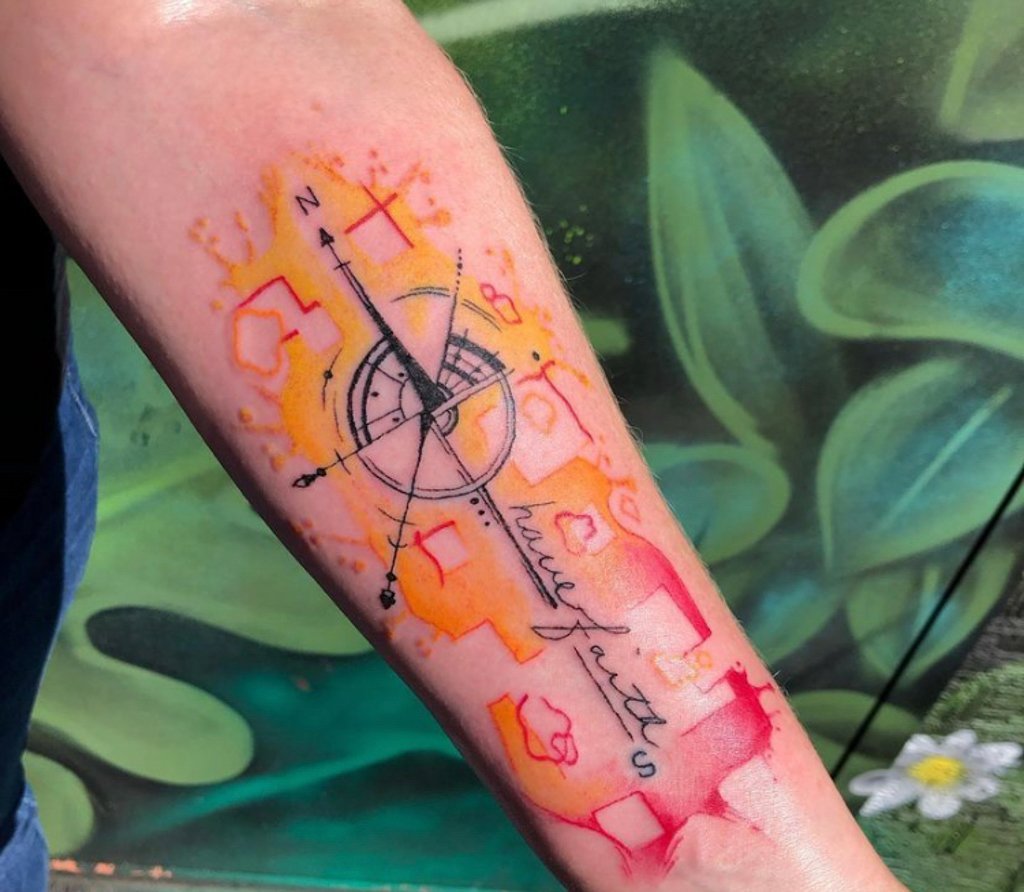How Much Does a Watercolor Tattoo Really Hurt?
If you're considering getting a watercolor tattoo, you may be wondering how much it will hurt. Tattoo pain is a common concern for many people, and it's important to be prepared for the experience.
While tattoo pain is subjective and can vary depending on the individual, there are some general factors that can affect the amount of discomfort you feel during a watercolor tattoo.
What to Expect When Getting a Watercolor Tattoo
First and foremost, it's important to understand that tattoo pain is a normal part of the tattooing process. All tattoos involve some level of discomfort, and it's important to be prepared for this. However, the amount of pain you feel will depend on your individual pain tolerance and the specific details of your tattoo.
The Factors That Affect Tattoo Pain
The amount of pain you feel during a tattoo will depend on a variety of factors, including your individual pain tolerance, the placement of the tattoo, and the style of tattoo. In this section, we will explore some of the factors that can affect tattoo pain, and we will address the common question of does color tattoo hurt more than black and grey tattoos.
One of the most significant factors that can affect tattoo pain is your individual pain tolerance. People have different pain thresholds, and what may be a tolerable level of discomfort for one person may be unbearably painful for another. If you have a low pain tolerance, you may experience more discomfort during a tattoo than someone with a higher pain tolerance.
The placement of the tattoo can also affect the amount of pain you feel. Tattoos on bony or sensitive areas of the body, such as the ribs or the inner arm, may be more painful than tattoos on fleshier areas like the upper back or the thigh. In addition, tattoos on areas with a lot of nerve endings, such as the wrists or the ankles, may be more painful than tattoos on other areas of the body.
The size and complexity of the tattoo design can also affect tattoo pain. Larger tattoos and tattoos with a lot of fine lines and detail, such as watercolor tattoos, may be more painful than smaller and simpler designs. The more intricate and detailed the tattoo, the more time it will take to complete, and the more discomfort you may experience.
The style of tattoo can also affect tattoo pain. For example, traditional tattoos, which use bold and thick lines, may be less painful than fine line tattoos, which use delicate and detailed lines. In general, tattoos that use thin and fine lines may be more painful than tattoos that use thicker and bolder lines.
One common question about tattoo pain is whether color tattoos are more painful than black and grey tattoos. The answer to this question is not clear-cut, as the pain of tattooing is subjective and can vary depending on the individual.
However, some people do report that color tattoos are more painful than black and grey tattoos. This may be because the process of applying color to the skin involves multiple passes with the tattoo needle, which can be more painful than applying black ink. Additionally, the vibrance and intensity of color tattoos may make them more noticeable and more painful for some people.
The Role of the Tattoo Artist
The role of the tattoo artist is crucial when it comes to tattoo pain. A skilled and experienced tattoo artist will be able to provide valuable advice and guidance on how to prepare for your tattoo and minimize discomfort. They will also be able to adjust their tattooing technique to reduce pain, and they will be able to provide breaks and numbing agents if necessary.
Finding a Skilled and Experienced Artist
In the growing trend of watercolor tattoos, finding an experienced and skilled watercolor tattoo artist can often be difficult. Those seeking out these works of body art need to make sure they’re as informed and confident in their selection as possible.
When searching for watercolor tattoo artists near me, try to find an artist who has plenty of experience, who displays samples of watercolor tattoos on their social media or website. It is important to look at the portfolio closely and do your research through customer reviews before making a final decision.
Although there might not be many watercolor tattoo artists near you, a quick search online will give you access to a wider range of options and allow you to compare talent and prices as well - so don’t hesitate to look further if you're dissatisfied with local choices!
The Importance of Aftercare
Tattoo after care is also an important factor in reducing tattoo pain and ensuring the best possible results. Proper aftercare can help to maintain the health and appearance of your tattoo, and it can also help to prevent infection and other complications. Follow your tattoo artist's instructions for aftercare, and avoid activities that could harm your tattoo.
Wrap Up!
Tattoo pain is a normal part of the tattooing process. While the amount of discomfort you feel during a watercolor tattoo will depend on your individual pain tolerance and the specifics of your tattoo, it's important to be prepared for some level of discomfort.
By choosing the right tattoo artist, following their advice on aftercare, and taking good care of your tattoo, you can help to reduce tattoo pain and ensure the best possible results. A beautiful and meaningful watercolor tattoo is worth the temporary discomfort, so don't let tattoo pain discourage you from getting the tattoo you want.


